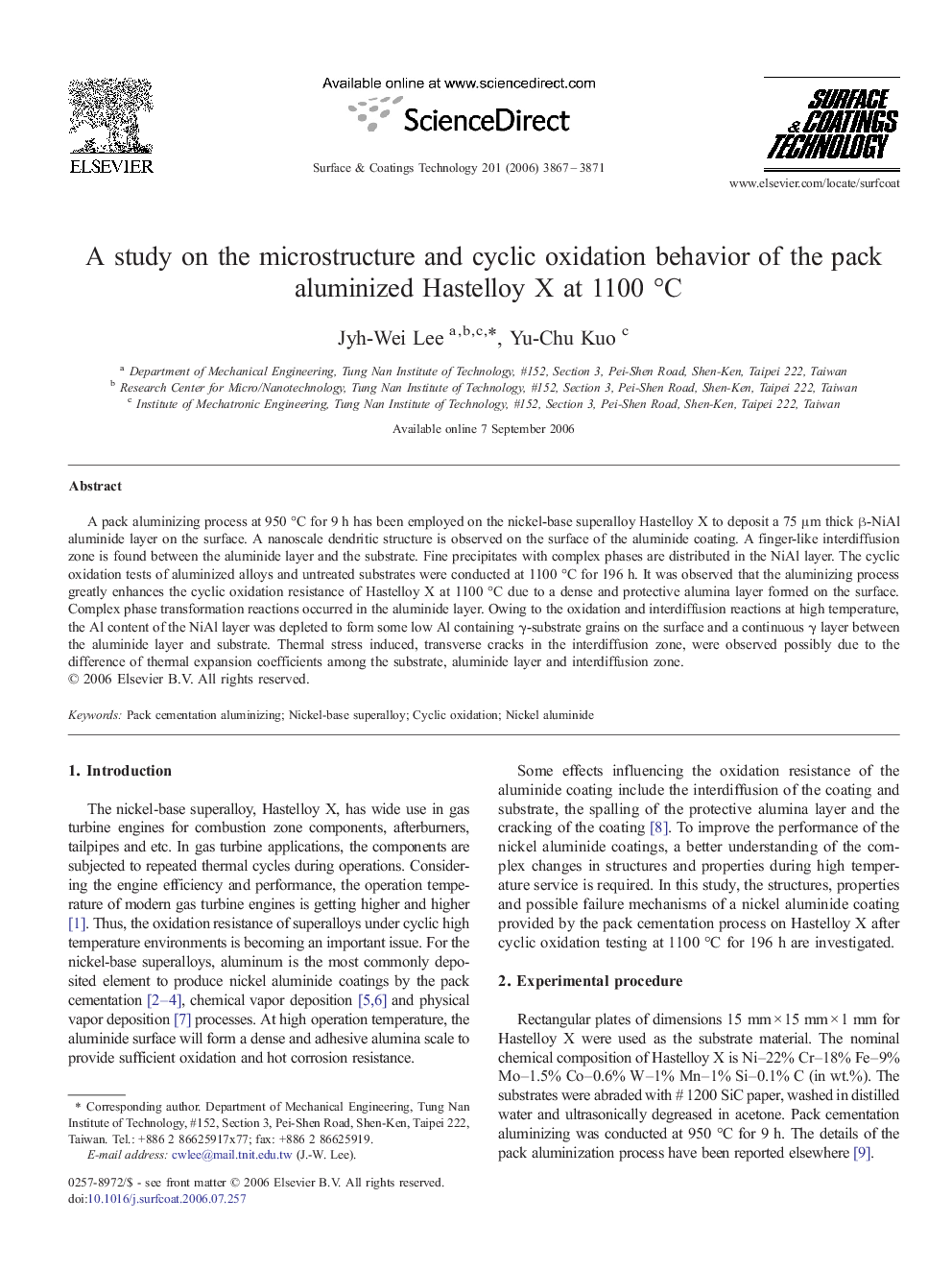| Article ID | Journal | Published Year | Pages | File Type |
|---|---|---|---|---|
| 1663175 | Surface and Coatings Technology | 2006 | 5 Pages |
A pack aluminizing process at 950 °C for 9 h has been employed on the nickel-base superalloy Hastelloy X to deposit a 75 μm thick β-NiAl aluminide layer on the surface. A nanoscale dendritic structure is observed on the surface of the aluminide coating. A finger-like interdiffusion zone is found between the aluminide layer and the substrate. Fine precipitates with complex phases are distributed in the NiAl layer. The cyclic oxidation tests of aluminized alloys and untreated substrates were conducted at 1100 °C for 196 h. It was observed that the aluminizing process greatly enhances the cyclic oxidation resistance of Hastelloy X at 1100 °C due to a dense and protective alumina layer formed on the surface. Complex phase transformation reactions occurred in the aluminide layer. Owing to the oxidation and interdiffusion reactions at high temperature, the Al content of the NiAl layer was depleted to form some low Al containing γ-substrate grains on the surface and a continuous γ layer between the aluminide layer and substrate. Thermal stress induced, transverse cracks in the interdiffusion zone, were observed possibly due to the difference of thermal expansion coefficients among the substrate, aluminide layer and interdiffusion zone.
